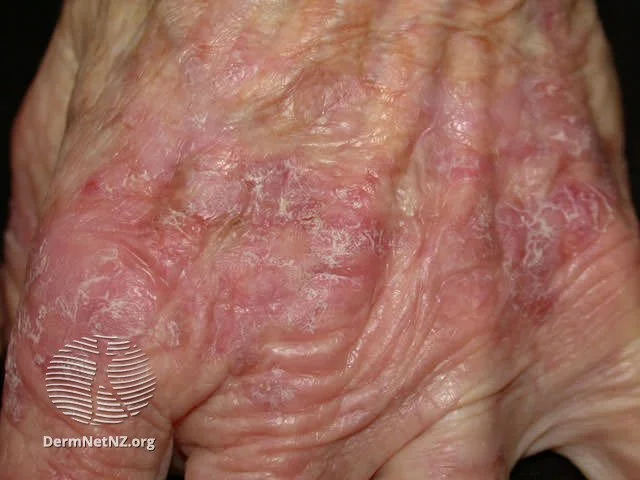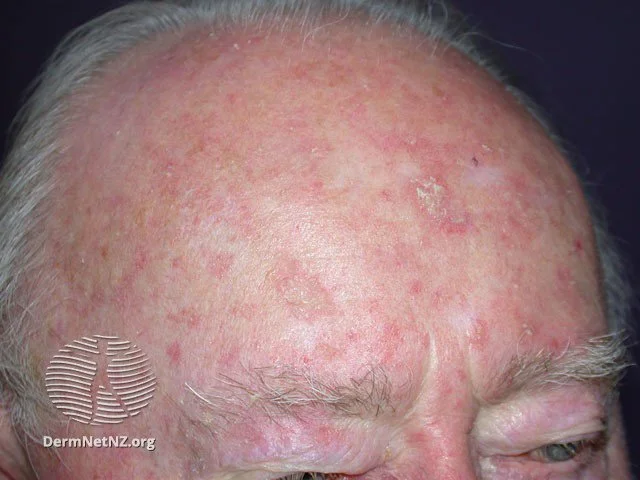
Actinic Keratosis
Actinic keratosis presents as a rough, scaly red patch on sun-damaged areas. Sometimes you can feel it more than you can see it, and it will feel crusty or sandpapery.
Credit: DermNet NZ
What is an actinic keratosis?
An actinic keratosis is a precancerous lesion characterized by rough or scaly skin that commonly appears in areas frequently exposed to the sun. Although a small percentage of these lesions may progress to squamous cell carcinoma if left untreated, most do not become cancerous.
What causes actinic keratoses?
The primary cause of actinic keratoses is prolonged exposure to ultraviolet (UV) radiation, typically resulting from years of sun exposure or tanning bed use. While these lesions are more prevalent in older adults, younger individuals with substantial sun exposure can also develop them. Additional risk factors include fair skin, a compromised immune system, certain genetic disorders, and infection with human papillomavirus (HPV). Commonly affected areas include the face, scalp, arms, and hands.
What are the symptoms of actinic keratoses?
An actinic keratosis typically presents as a small, light-colored, scaly plaque surrounded by redness. The lesion often has a sandpaper-like texture. However, the appearance can vary, with some lesions having minimal scaling, while others may be thicker and more prominent.
How do I treat actinic keratoses?
Multiple treatment options are available for actinic keratoses:
Cryotherapy: Application of liquid nitrogen to freeze the lesion
Topical Chemotherapy Creams: Such as 5-fluorouracil (5-FU) or imiquimod
Photodynamic Therapy: Involves the application of a topical photosensitizing agent followed by exposure to specific wavelengths of light
How do I prevent actinic keratoses?
The most effective prevention measure is to minimize unnecessary sun exposure and avoid tanning beds. Once an actinic keratosis has formed, it serves as an indicator that the affected skin area has already incurred significant sun damage and should be consistently protected with clothing or sunscreen moving forward.
Rough, scaly patches on the back of the hand of a person with sun-damaged skin
Credit: DermNet NZ
Actinic keratosis can appear as dry skin or look like other skin conditions.
Credit: DermNet NZ


